Don't Overthink Bird Feeding in Winter – These 5 Simple Ingredients Will Keep All Your Backyard Birds Happy
Forget expensive bird food mixes this winter. Simple bird food for wild birds is easy to source. Here are 5 high-impact, expert-approved ingredients guaranteed to help them survive through winter
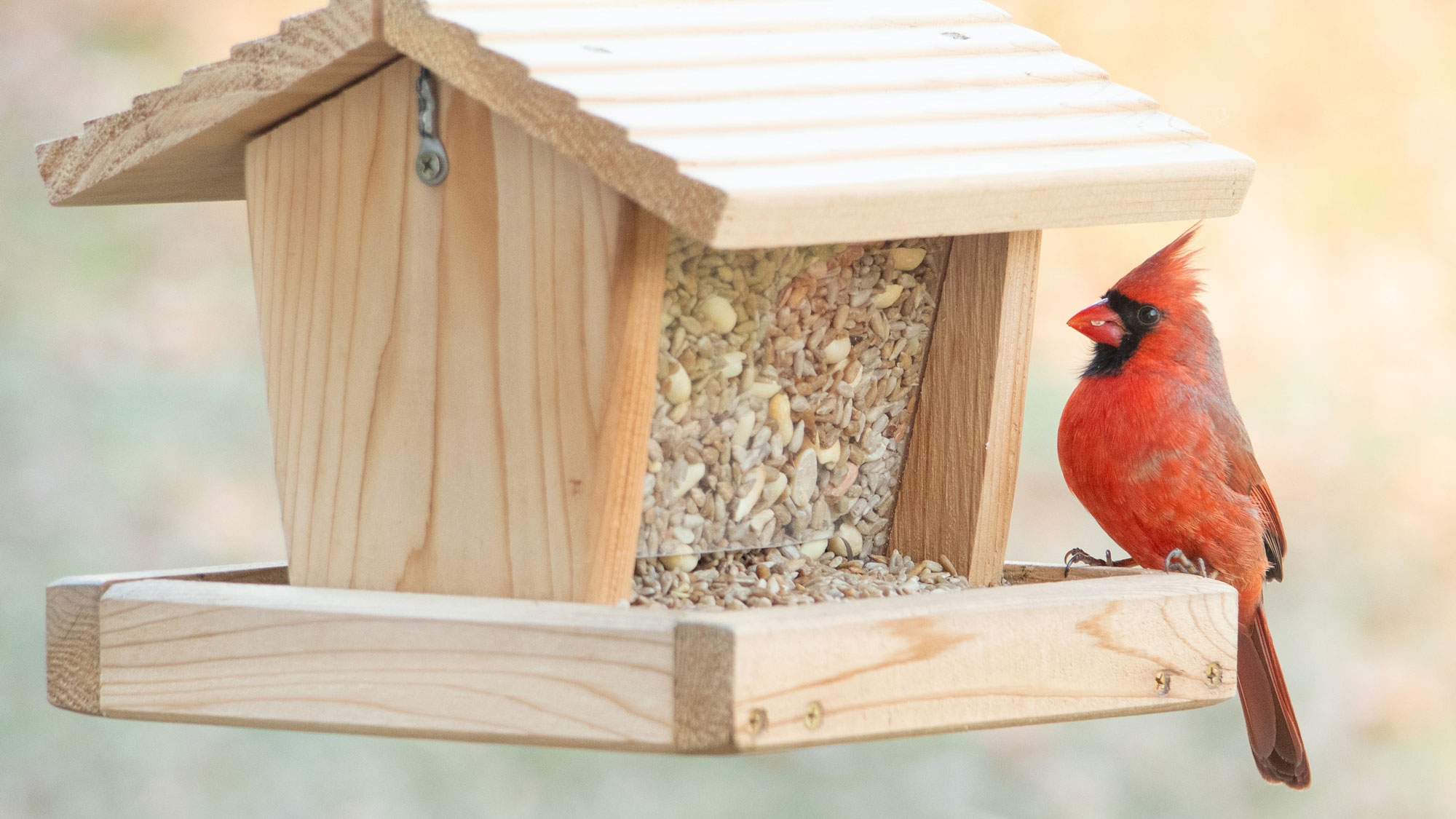

As temperatures continue to drop, it's important to remember that our feathered friends have to live in the cold through the entire season. There's no radiator to thaw their feathers, or toasty blankets to cozy up in as the snow drifts deepen and the chilly winds bite. What you need is simple bird food for wild birds to help keep them nourished with key nutrients.
Ensuring you leave the right mixture of food out for birds during winter is one of the best things you can do to keep them happy and healthy. This blend should ideally contain healthy fats, energizing carbs, and a nearby water source to wash everything down. Of course, you’ll want to get your bird feeding essentials right, especially in winter when many alternative food sources are scarce – but it’s also important not to waste time overcomplicating it.
To help you find the best food for your yard's birds, I’ve gathered together recommendations and nutritional insights from bird experts to identify the key feed ingredients you need to make available. They are all your feeder needs this winter, and they are guaranteed to appeal to a wide collection of known feathered visitors and keep them well nourished. And who knows? You may see a few new birdie guests come to try out the buffet!
Key Bird Feeding Ingredients
The best time to help winter birds is right now. You don't need a massive, expensive setup; just the right ingredients. And the good news? If you’ve been fretting about making feeding mistakes in winter, read on – because the best bird food for wild birds is oh so simple to get right. If you have taken a quick look around your yard to see which lingering plant seed heads and berries you can leave standing, just ensure your feeders are stocked with these 5 energy-rich items. Fill your feeders and bird tables now to guarantee happy, healthy birds that will be flocking to your backyards all winter long.
1. Sunflower Seeds

Sunflower seeds often feature in bags of store bought seed mix, and for good reason! They're packed with essential oils and fats that help to give birds extra energy and warmth in winter temperatures. However, for anyone who has been collecting and saving flower seeds in fall, sunflower seeds will hopefully already be in ready supply – and they are a great way to get birds flocking to your yard in winter.
Maria Kincaid, ornithologist at FeatherSnap, explains: "Sunflower seeds are a great source of energy for birds, as they're filled with fats and protein. "Black oil sunflower tends to be easier for birds to shell than the harder shelled striped sunflower seeds, but if you’d like to make it even easier, you can provide sunflower hearts or chips."
Northern Cardinals love sunflower seeds: Their large, strong beaks are perfect for cracking the shells of black oil seeds to get to the oily, high-fat core. Chickadees like the easy-to-access sunflower hearts (shelled seeds) for quick, protein-rich energy.Meanwhile, bluejays are fond of hiding (known as caching) seeds to sustain them through cold periods, relying on the high fat and protein content. Try Old Potters Sunflower Hearts from Walmart.
Sign up for the Gardening Know How newsletter today and receive a free copy of our e-book "How to Grow Delicious Tomatoes".
2. Peanuts
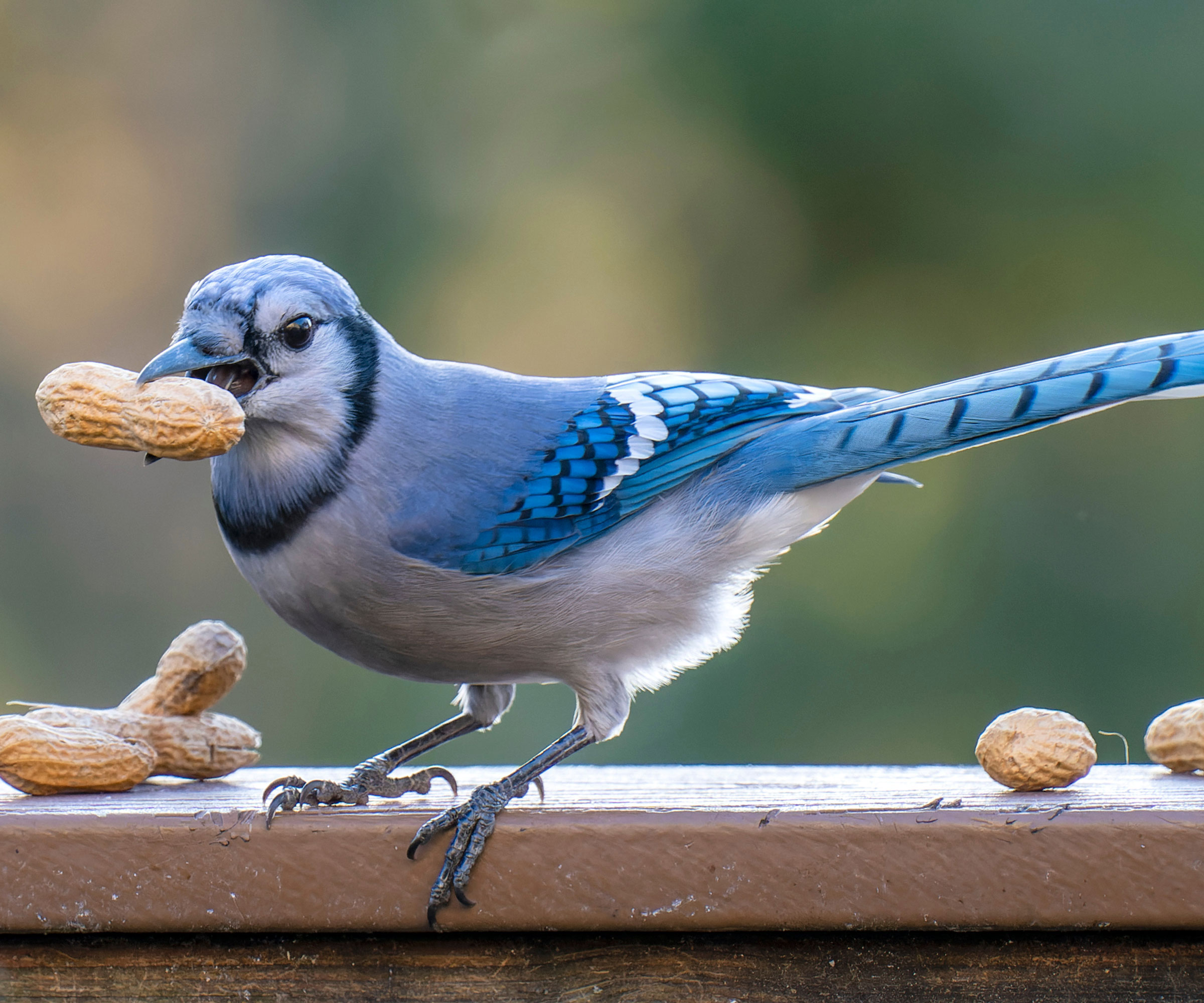
Peanuts are a highly underrated source of food for winter birds and a great way to boost backyard visitors if you are keen on a little winter bird watching. Permitted they aren't roasted or salted, plain shelled peanuts provide an amazing source of healthy fat for many common songbirds and other feathered guests.
The dense fat and protein mimics the insects that woodpeckers typically hunt for in summer, making it a crucial substitute in winter. Nuthatches love peanuts, as their acrobatic feeding style requires a lot of fuel, and they rely on the concentrated caloric boost of the high-fat peanut. Bluejays consume them immediately or aggressively cache whole, shelled peanuts for later, ensuring a long-term energy supply.
"Shelled, unsalted peanuts are high in fat, which provides much-needed energy for birds during cold weather," says Maria. People often associate leaving peanuts out with squirrels, but birds love them too! Grab large bags of Armstrong Wild Bird Food Shelled Peanut Halves from Amazon.
3. Suet

Suet is one of the most simple yet important food sources to leave out for winter-feeding birds. It's particularly high in fat – you'll see a common theme here, birds in winter need fat for energy and warmth! Suet is also great to mix in with other sources of nutrition. Wildlife Sciences Suet Cake for Wild Birds from Amazon is a great all-rounder for the quick fix many garden birdiers love.
Dan DeBaun, a bird expert and blogger at Dan's Bird Bites, is keen to reiterate why birds love it: "Suet is mostly fat: pure and simple,” he says. “Birds love it during the winter. It’s perfect for several feathered visitors looking for a good fat source.
Suet mimics the consistency and high fat content of the insects and grubs that woodpeckers typically forage for under tree bark. Small birds like chickadees lose body heat quickly and need the pure, easily digestible fat in suet to keep their body temperature stable. And as insectivores, Carolina wrens struggle when the ground freezes, making suet a vital, high-calorie replacement food.
Dan also has a great insider secret for anyone worried about bird feeders attracting rodents: “Sometimes I put spicy suet into my feeder. I find that it helps deter squirrels and rodents from eating it all,’ says Dan. ‘Birds don’t notice spicy food like mammals do!" So to keep birdies happy while detracting rodents, try adding a small amount of cayenne, chilli, or paprika powder into your food mix.
4. Mealworms
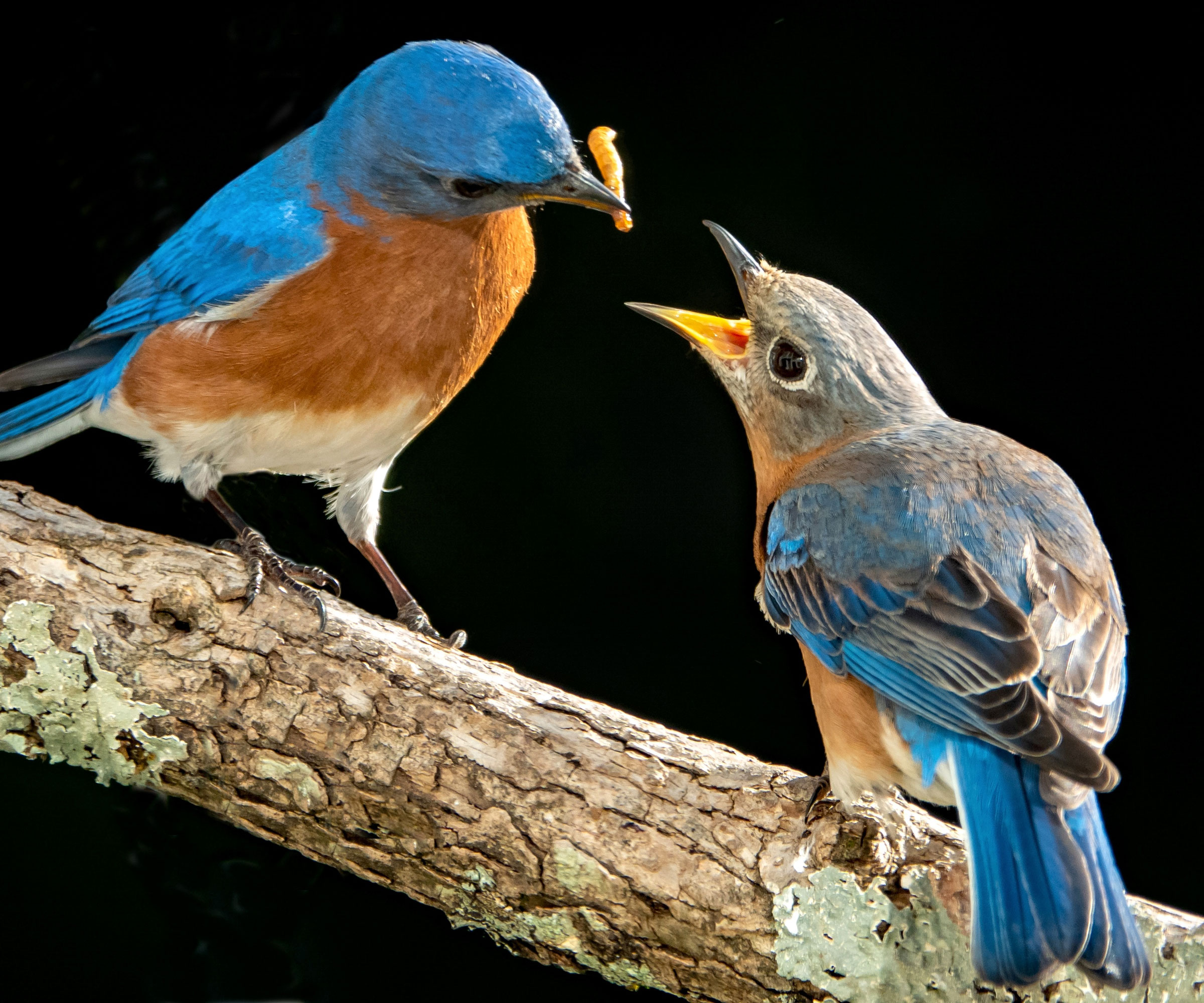
Mealworms are amongst the big superfoods of the bird world. They're high in protein and great to leave out during the winter when insect-loving birds are struggling to get their fix of insects elsewhere. American robins and eastern bluebirds are primarily insectivores and frugivores, and mealworms are an easily accessible replacement for grubs and worms. Meanwhile, chickadees and cardinals use the high protein for tissue repair and maintenance, which is crucial for cold weather survival and nesting prep.
"Mealworms are an often overlooked superfood for bird feeding," says Dan. "If you haven’t added any to your feeding station, it’s worth experimenting with. Adding mealworms to your feeders is an easy way to draw in more species, as well as provide insects for birds who will struggle to find as many to eat in the winter,” he adds. You can purchase bags of Amzey Dried Mealworms from Walmart.
5. Nyjer Thistle Seed

Nyjer thistle seed is a lesser known food but it is adored by birds, important for its natural fats and oils. Though many gardeners skip it in favor of something a little less pricey with similar fat contents, one bird group in particular loves it: finches. "Nyjer thistle attracts a wide variety of finches, pine siskins, and dark-eyed juncos, and will also attract chickadees and occasionally doves," says Maria.
American goldfinches, with their small, pointed bills, are perfectly adapted to extract the tiny seeds from thistle feeders, and they rely on the seed's high oil and fat content for warmth. Other small species like house finches and pine siskins require the rich energy source of nyjer to sustain their rapid metabolism in cold weather.
So if you're hoping to attract finches or already have many settled near your yard, it's a worthwhile investment to bulk buy some for the winter months. You can buy Happy Wings Nyjer Seeds for Wild Birds from Amazon.
Don't Forget: Natural Foraging Options

These core ingredients deliver a fast fix of essential fats and proteins, but it’s also worth factoring in a few natural foraging opportunities. Birds love to forage around for seeds and berries, so if you're looking for an easy way to help them out in the winter, make natural food sources like these more accessible by planting bird-friendly shrubs and seed-abundant flowers that attract birds to your yard.
Steve Corcoran, CEO of Lawn Love, points out the vital role birdseed plants play in sustaining our feathered foragers. "Birds often rely on the seeds of dormant plants for their winter feeding,” says Steve. “That’s why it can be helpful to not cut all of your perennial plants back. Instead, let flower heads that have seeds in them remain through to winter. Sunflower heads are a great source of seeds. Black-eyed Susans and coneflowers are two others that provide birds with seeds in winter."
Hawthorn, holly, and rowan are major food sources for American robins, cedar waxwings, and eastern bluebirds when insects are gone. If you wish to grow more native plants as well as bird-friendly options, the following native berrying plants can also help to bolster your bird-friendly food sources over winter:
- Elderberry: The fruit is often quickly eaten by gray catbirds and cedar waxwings before winter, but the dried fruit can persist and is an important food source.
- Blackberry: Often appreciated by ground-feeding birds like sparrows and dark-eyed juncos who look for fallen fruit or residual seed.
- Winterberry holly: The bright red berries of this deciduous shrub hold on through winter, becoming palatable after a few freezes. Ilex verticillata is highly attractive to robins and bluebirds.
- Sumac: Velvety clusters of sumac (Rhus spp.) berries last well into winter and are an important food source for bluejays and northern cardinals later in the season.
- Eastern Redcedar: The bluish-black berries of Juniperus virginiana are a key food source for cedar waxwings and provide excellent, dense shelter from the elements.
So simply commit to leaving dormant flower heads and winter berries untouched, and you’ll have another simple way of sustaining your visiting birdlife, alongside your 5 core bird-feeder ingredients. A blend of accessible feeders and natural food will create the ultimate sanctuary for every bird species passing through.
Stock Up On Bird Food Essentials
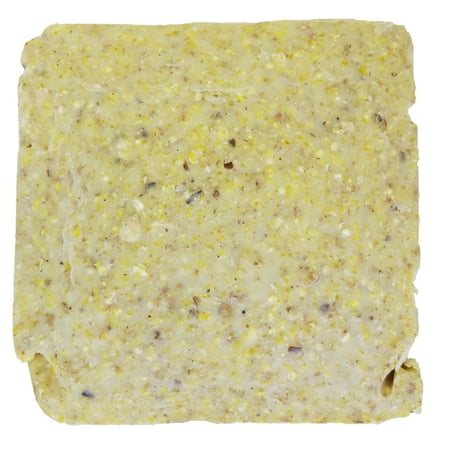
These suet cakes are designed to keep their shape for longer than traditional suet balls that can crack and break in the cooling weather.
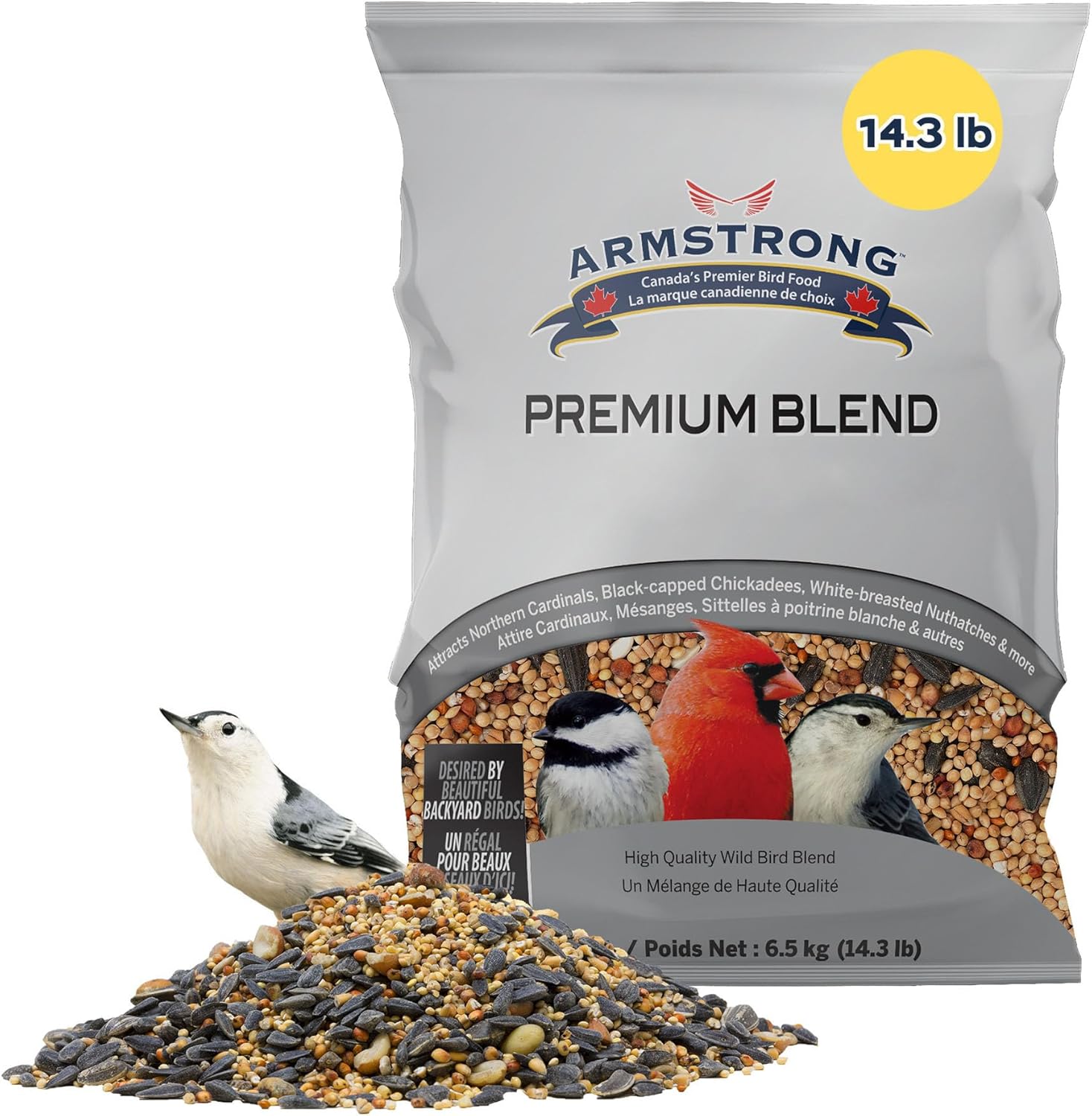
If you don't feel up for creating your own bird food mix, a store bought one like this ticks lots of boxes. It contains black oil sunflower as well as peanuts and other goodies.
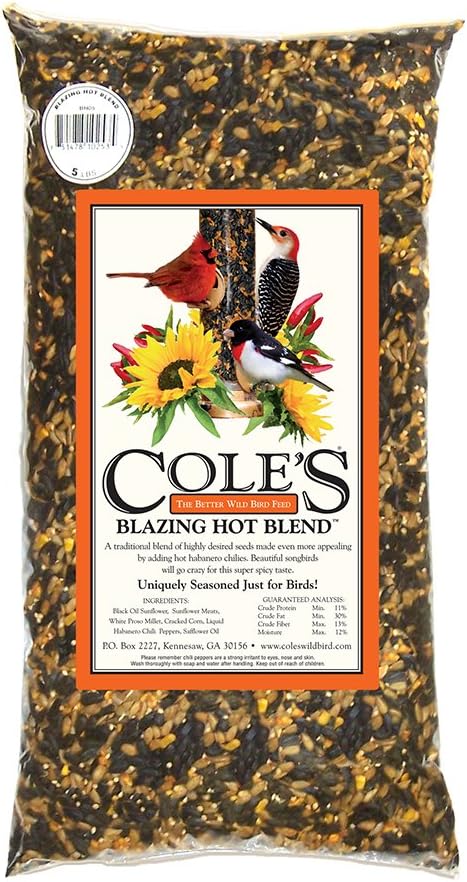
This seed mix already contains chilli to help ward off rodents. Your garden birds won't be able to taste it at all though!
Don't let the thought of complex bird feeding mixes stop you from helping your feathered neighbors. By focusing on just 5 powerhouse ingredients, rich in the fats and protein that experts recommend, you can be confident that your backyard is providing the crucial fuel needed for their survival. Start small: pick one new ingredient, find a clean feeder, and enjoy watching the variety of hungry birds that arrive to thank you.
Need more ideas for wildlife and gardening, plus the best seasonal expert advice delivered straight to your inbox? Sign up for the free Gardening Know How Newsletter!

Ciéra is a writer and regional laureate with particular passions for art, nature, philosophy and poetry. As well as contributing to Gardening Know How, she's an Editorial Assistant for Design Anthology UK and has words in other titles including Homes & Gardens, Livingetc, and Apartment Therapy. When she's not writing, Ciéra can be found getting incredibly excited when her small but ever-expanding garden shows more signs of growth. She believes it's something very beautiful to be cooking with her own produce, whether it's from her yard or picking berries from the wild to turn into jams or baked goods.